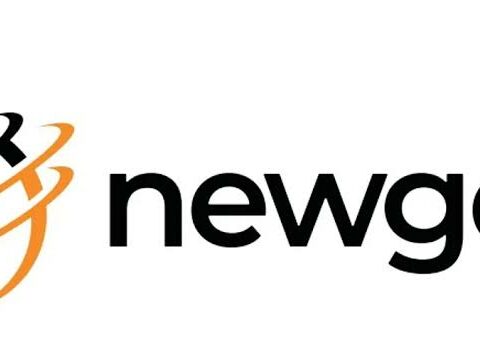During the pandemic, the insurance industry has seen a significant uptick in business, primarily due to the rise in the number of claims. As a result, insurance organizations need to brace themselves to handle the growing business volume. In the coming years, the key to success for these organizations will be adopting new-age technologies and a digital-centric approach to remain current, competitive, and customer-focused.
Here are seven emerging technology trends that insurers must watch out for in 2021 and beyond:
- Artificial Intelligence and Machine Learning for Unleashing Intelligent Insights
Artificial intelligence (AI) and machine learning (ML) will play a substantial role in the insurance sector.
AI enables insurers to offer personalized offerings and meet their high-speed expectations efficiently. The insurers can utilize AI to achieve a shorter prospect-to-customer lifecycle and improved claims turnaround time. It helps in achieving faster data processing times, better scrutiny, and more accurate reporting. Furthermore, insurers can use AI for fraud prevention, customer analysis, claims management, and streamlining operations.
ML enables insurers to automate the claims processing journey. Data analytics and extraction technologies, powered by machine learning, bring order to unstructured information for effectively mining data for business insights. ML uses programmed algorithms to analyze data and documents to improve speed and accuracy. Its applications within the insurance sector can be extended to risk appetite understanding and premium leakage, expense management, subrogation, litigation, and fraud identification.
- Robotic Process Automation for Improved Accuracy
Robotic process automation (RPA) can eliminate manual intervention from operations, thereby increasing accuracy and efficiency in claims management and underwriting processes. Repetitive tasks, such as information extraction and data entry, can be automated and accelerated using RPA, significantly improving productivity and reducing operating costs.
Furthermore, RPA will help insurance organizations to:
- Reduce the manual work associated with claims processing
- Automate the manual tasks associated with data collection and aggregation and enable underwriters to analyze vast amounts of information
- Increase scalability as bots can be deployed per the need of the insurance company
- Automate standard processes and enable straight-through servicing for select cases using chatbots
- Low Code Platforms for Rapid Application Development
In this digital era, time to market is a critical factor for businesses. Insurers need to manage software platforms, comply with new regulations, deploy updates, and reach the market with new products faster.
Low code tool allows professional IT developers to rapidly configure complex to mission-critical applications using intuitive, user-friendly drag-and-drop functionality. This empowers professional IT developers to spend more time on critical issues and have better control and visibility.
Low code platforms allow insurers to quickly process claims applications by enabling users to fetch data captured through mobile or other digital devices, including pictures and videos. Some other areas where low code platforms can add value are customer onboarding, customer service management, and application personalization.
- Blockchain Technology for Security
Blockchain can help insurance agencies save time, cut costs, improve transparency, comply with regulations, and build better products. It enables secure management of data across multiple interfaces and stakeholders without loss of integrity. Blockchain allows insurers to reduce operational costs, manage frauds, and ensures data availability across processes, such as identity management, underwriting, and claims processing.
Insurers can leverage blockchain to:
- Secure policy underwriting and servicing processes and increase process efficiency by using self-executing, smart contracts. Furthermore, it enables insurers to track claims and update conditions
- Transform business transactions and information exchange while minimizing high costs dedicated to verifications. This reduces error-prone manual re-keying of data
- Reduce administrative costs through automated verification of claims/payments datafrom third parties
- Internet of Things for Personalized Product Recommendations
With the pervasive utilization of digital technologies and gadgets, consumers are ready to share more information about their lifestyles and health. The internet of things (IoT) automates data sharing and helps customers get more savings on their insurance policies. Devices such as smartphones, wearables, sensors, and automobile accessories can assist in determining better premium pricing, premium calculation, prevent losses with timely alerts, and reduce risks. IoT provides insurers with first-hand data to improve accuracy and generate higher revenues.
- Predictive Analytics for Superior Data Insights
Analytics has become a staple for organizations with even the most basic level of digitization. Moving into the future, insurers can leverage predictive analytics to assess the current and evolving market conditions and anticipate upcoming trends in the industry. Furthermore, using predictive analytics, insurers can analyze data, patterns, and customer behavior to identify:
- Outlier claims
- Triaging claims
- Customers at risk of canceling their policy
- Possible fraudulent activities
- Potential cross- and up-sell opportunities
- Customer needs based on lifestyle changes
- Drones for Data Collection
Insurers are adopting drones across multiple stages of the insurance lifecycle. Drones can be helpful in data collection, pre-policy issuance risk calculation, preventative maintenance, and claims assessment. It also provides virtual views, 3-D walkthroughs, and aerial images for analysis. The technology makes it easier to virtually access hard-to-reach locations and calculate risks. The data captured can be used to perform due diligence, set effective pricing, reduce inspection costs, and analyze loss values for claims
To Conclude
With the ever-evolving customer and market dynamics, it is high time for insurers to actively prioritize technology investments to stay current and exceed their customers’ expectations. With new-age technologies, insurers can build a digital enterprise that helps them engage customers, stay ahead of the curve, and deliver superior experiences across multiple channels.
The above article is authored by Shantanu Tewari, General Manager, Insurance Center of Excellence, Newgen Software.







